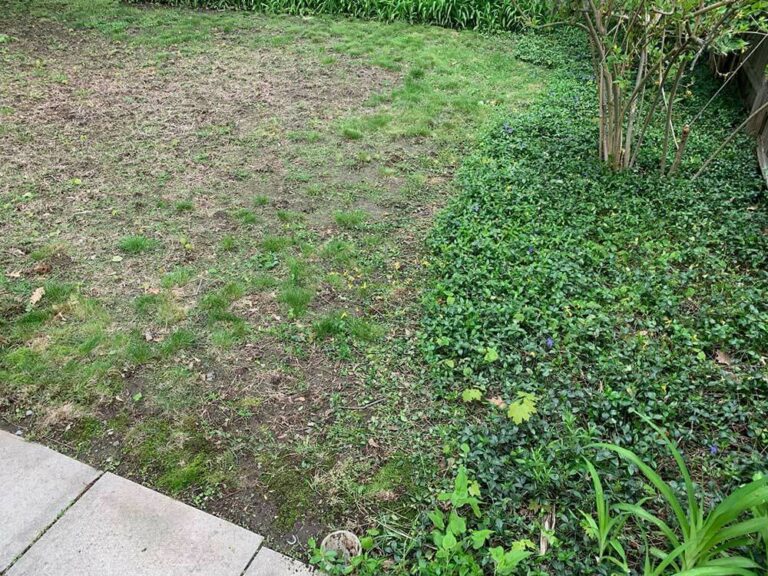For many homeowners, having a lush, green lawn is a source of pride. But getting and keeping that flawless lawn might be difficult at times. Common lawn problems, from brown patches to weed infestations, can disrupt the beauty of your outdoor space. Time and money may be saved by being aware of these problems and learning how to solve them. This guide explores some of the most common lawn problems and provides practical solutions to help you maintain a healthy lawn. For those looking for professional help, seeking a reliable lawn care service in Lakewood can also be a great option.
Brown Patches
Your lawn’s brown spots can be unsightly and can point to deeper problems. These patches can result from various factors, including over- or under-watering, fungal diseases, or compacted soil.
How to Fix Brown Patches
First, determine the cause of the brown patches. If over- or under-watering is the issue, adjust your watering schedule. Lawns generally need about an inch of water per week, either from rainfall or irrigation. For fungal diseases, consider applying a fungicide recommended for your grass type. Aerating your lawn can alleviate soil compaction, allowing water, nutrients, and air to penetrate the soil more effectively.
Weed Infestation
If weeds are not properly controlled, they may swiftly take over your lawn by competing with the grass for nutrients, water, and sunshine. Common lawn weeds include dandelions, crabgrass, and clover.
How to Fix Weed Infestation
To control weeds, maintain a healthy lawn through regular mowing, watering, and fertilizing. Applying pre-emergent herbicides in early spring can prevent weed seeds from germinating. For existing weeds, use post-emergent herbicides targeted to the specific weed type. Manual removal can also be effective, especially for larger weeds with deep roots.
Thatch Build-Up
Between the earth and the green grass lies a layer known as thatch, which is made up of dead grass, roots, and other detritus. While some thatch is appropriate in modest amounts, too much thatch can obstruct the flow of nutrients, air, and water into the soil.
How to Fix Thatch Build-Up
To reduce thatch, dethatch your lawn using a rake or a dethatching machine. This process should be done when the grass is actively growing, typically in the spring or early fall. Regular aeration can also help break down thatch naturally by encouraging microbial activity in the soil.
Lawn Pests
Pests that affect lawns, such armyworms, chinch bugs, and grubs, can seriously harm your grass. Signs of pest infestation include patches of dead grass, irregular brown spots, and an increase in bird or animal activity on your lawn.
How to Fix Lawn Pest Problems
Identify the specific pest causing the issue by inspecting the damaged areas. For grubs, you can check for white, C-shaped larvae beneath the soil. Apply appropriate insecticides based on the type of pest you have. Natural solutions, such as nematodes for grub control, can also be effective. Strong grass growth encouraged by regular mowing, feeding, and watering of the lawn can help minimize insect issues.
Poor Soil Quality
Healthy grass requires nutrient-rich soil with good drainage. Poor soil quality, often characterized by heavy clay or sandy soils, can lead to weak grass growth and increased susceptibility to other lawn problems.
How to Fix Poor Soil Quality
By adding organic matter, like compost, to your grass, you may improve the condition of the soil. This can enhance soil structure, drainage, and nutrient content. Soil testing can help determine the specific amendments needed to balance soil pH and nutrient levels. Based on the test results, apply the recommended fertilizers and soil conditioners.
Shade Issues
Grass requires sunlight to thrive, and shaded areas often struggle to maintain healthy growth. Over time, shaded grass can become thin and weak, allowing moss and weeds to take over.
How to Fix Shade Issues
Select grass cultivars that can withstand greater shade, such St. Augustine or fine fescue. To give the grass more sunshine, prune bushes and trees. In areas where grass growth is particularly challenging, consider alternative ground covers like mulch or shade-tolerant plants.
Overwatering or Underwatering
Both overwatering and underwatering can cause significant stress to your lawn. While underwatering can result in dry, brittle grass, overwatering can lead to shallow root systems and greater susceptibility to diseases.
How to Fix Watering Issues
Establish a consistent watering schedule that provides about an inch of water per week. For deep roots to grow, water thoroughly and sparingly. To keep an eye on the moisture content of the soil, use a soil moisture meter or rain gauge. Adjust watering based on weather conditions, increasing during hot, dry periods and reducing during cooler, wetter seasons.
Soil Compaction
Soil compaction occurs when soil particles are pressed together, reducing pore space and limiting the movement of air, water, and nutrients. This can lead to poor root growth and an unhealthy lawn.
How to Fix Soil Compaction
Aerate your lawn to relieve soil compaction. This process involves removing small cores of soil from the lawn to improve air and water movement. Aeration is best done during the growing season, either in the spring or fall. Regular aeration can help maintain a healthy lawn by preventing compaction.
Fertilization Problems
Improper fertilization, whether too much or too little, can cause lawn problems. Over-fertilization can lead to nutrient imbalances and increased disease risk, while under-fertilization can result in weak grass growth.
How to Fix Fertilization Problems
Follow a balanced fertilization schedule based on your grass type and soil test results. Use slow-release fertilizers to provide a steady supply of nutrients. Apply fertilizer at the recommended rate and avoid overlapping applications. Too much fertilizer can burn the grass, while too little can leave it undernourished.
Conclusion
A beautiful, healthy lawn requires regular care and attention to prevent and address common problems. By understanding the causes and solutions for issues such as brown patches, weed infestations, thatch build-up, lawn pests, poor soil quality, shade issues, watering problems, soil compaction, and fertilization problems, you can maintain a vibrant lawn. For those seeking professional assistance, a lawn care service in Lakewood can provide expert guidance and support. With the right approach, your lawn can become a lush, green oasis that enhances the beauty of your home and provides a pleasant outdoor space for relaxation and enjoyment.








